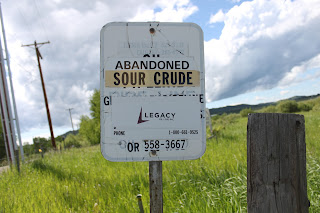Canada Declares Humpback Whale No Longer Endangered
B. McPherson
This is what we stand to lose if Enbridge Northern Pipeline is completed.
The feds in Ottawa have with the stroke of a pen declared
that the North Pacific Humpback Whale is no longer endangered. It is now merely
of “critical concern”. It was only in 2005 that the Humpback was red listed as
critically endangered.
The SPLASH estimates for the combined Southeast Alaska and British Columbia feeding areas are around 3,000-5,000 (Calambokidis et al.2008)
…No comprehensive assessment of North Pacific humpback whales has been conducted by the IWC Scientific Committee. The evidence suggests that North Pacific Humpback Whales have been increasing, following depletion by whaling, but that this recovery is not yet complete. ICUN Red List of Endangered Species
Environmentalists are crying foul at the
federal government’s actions. There is a federal requirement that for
critically endangered wildlife, the habitat must also be protected.
Unfortunately for the humpies, part of their habitat lies in the area south of
Haida Gwai and seaward of Douglas Channel. That area would be crossed by
hundreds of oil tankers yearly if the Northern Gateway Pipeline were built.
Hard on the heels of a court order directing the federal government to present an overdue recovery, the Harper government has reclassified them.
Coincidence in timing? You will have to be
the judge. It has been less than 10 years since they were considered so
endangered that they were red listed. While the females can live for as long as
48 years and reproduce every two years on average, they don’t reach sexual
maturity until they are six to ten years old. Each pregnancy is one year long.
That’s long gestation periods combined with a long time until sexual maturity.
Barring predation on the calves, that’s a big leap in a very short time to
declare them safe.
These peaceful giants are well known to
many on the BC coast. In the spring they may be observed from the western
shores of Vancouver Island as they make their annual trek to the cool summer
feeding grounds accompanied by their babies. The humpies overwinter in the Gulf
of California, females delivering their calves in the warm waters.
The humpback whale is known for its long,
complicated songs. Only the males sing, but they may do so for as long as 24
hours. It may be to challenge rivals.
When whaling pressure is removed, whale
populations often experience a bounce back in population, but the modern world
presents new dangers to the cetaceans. Entanglement in fishing gear and ship
strikes are leading causes of death. The large freighters now in use are a
particular danger to cetaceans. The International Whaling Commission estimates
that 308 000 whales and dolphins a year die as a result of entanglement in
fishing gear. They do not have figures for the number killed in ship strikes.
Some crews report strikes, others do not. The very large freighter might not
even feel a collision. The commission does have some sensible advice as they
are compiling statistics.
There is no universal solution to the problem of ship strikes but clearly the most effective way to reduce collision risk is to keep whales and ships apart. IWC
The endangered woodland caribou occupy territory in the path
of the proposed oil sands pipeline. There are an estimated 1500 left in the
province. Wait for the magic of the pen to upgrade them too.
Sources:

Comments
Post a Comment